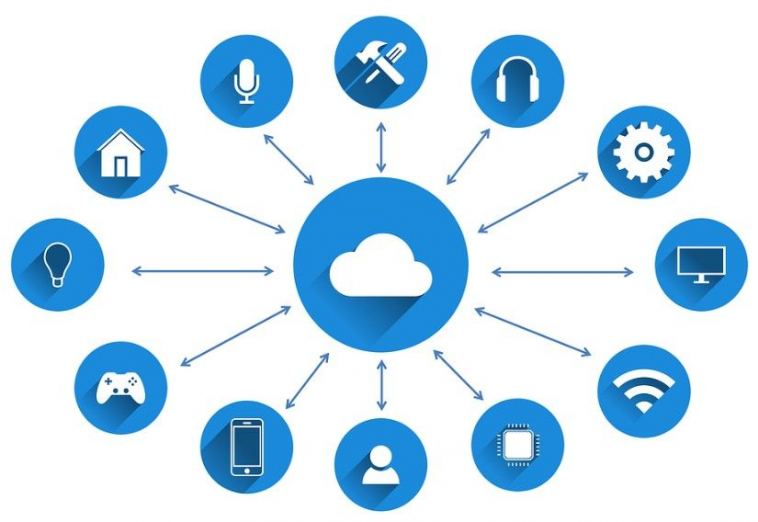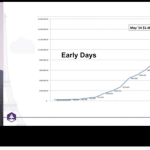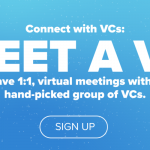- Like
- SHARE
- Digg
- Del
- Tumblr
- VKontakte
- Flattr
- Buffer
- Love This
- Save
- Odnoklassniki
- Meneame
- Blogger
- Amazon
- Yahoo Mail
- Gmail
- AOL
- Newsvine
- HackerNews
- Evernote
- MySpace
- Mail.ru
- Viadeo
- Line
- Comments
- Yummly
- SMS
- Viber
- Telegram
- JOIN
- Skype
- Facebook Messenger
- Kakao
- LiveJournal
- Yammer
- Edgar
- Fintel
- Mix
- Instapaper
- Copy Link
Demand for SaaS solutions has been growing exponentially over the past few years with both large and small businesses taking advantage of modern technologies. Understanding the common types of SaaS solutions is important in picking the right solution for a business. SaaS is the top layer of the cloud computing pyramid and also the most popular type of cloud computing service.
We have already covered things businesses should consider when transitioning to SaaS and some of the best SaaS solutions from different categories. This post focuses on the most popular type of SaaS solutions and how they can benefit businesses, especially small and medium businesses.
An Overview of SaaS
SaaS is a subscription-based model for delivering software/services over the internet. Compared to on-premises and traditional software, which in most cases require the users to be physically present in a certain location, SaaS software can be accessed from anywhere using almost any device. SaaS providers either create their own solutions or resell solutions made by another company and charge customers on a recurring basis.
The key benefits of using SaaS solutions include:
- Instant, anywhere-access
- Instant and better scalability
- More flexible and scalable than on-premises solutions
- Operational agility
- No need to heavily invest in the underlying infrastructure
- Businesses don’t have to worry about maintenance, upgrades and keeping the services running all by themselves
- Much lower upfront costs
- Feature updates and security policies are implemented automatically in most cases
- Disaster management
- Reduced carbon footprint
Cloud computing (by deployment) can be divided into four main groups as follows:
Public cloud: Computing resources are shared between the user base, suitable for SMBs
Private cloud: Dedicated resources, businesses own the infrastructure and have complete control over the data. High upfront and maintenance costs
Hybrid cloud: Allows users to host mission critical services on a private cloud and other services on the public-cloud
Community cloud: The cloud is shared between businesses/organizations with a common goal such as universities
The terms IaaS and PaaS also pop up when talking about SaaS. Think of cloud computing as a pyramid. IaaS (Infrastructure as a Service) is the foundation or the physical end of the cloud computing pyramid on top of which are PaaS (Platform as a Service) and SaaS (Software as a Service). SaaS is what most small and medium businesses are concerned about, which can also be defined as a ready-to-use software solution that is available for a recurring subscription fee.
Challenges Related to Transitioning to SaaS
Despite all its benefits, there are certain challenges associated with transitioning to SaaS, which businesses need to understand before making the move including:
- Requires a high level of business transformation
- Accurately predicting upgrade costs can be difficult when usage spikes
- Can be more expensive in the long run than on-premises software
- Less control over provisioning and security
- Not all businesses, especially SMBs have the technical expertise to manage the change
- Businesses are dependent on the provider for all aspects of service delivery and there isn’t much they can do if something goes wrong
- Data migration can become complex and challenging, especially when tight deadlines are involved
- Many businesses don’t have an adoption strategy to begin with
- Integration related issues can result in errors such as billing errors, which can lead to invoices being sent to wrong customers
- Access control does not always smoothly carry forward to from on-premises to SaaS software
- Moving to SaaS can take time and might affect business operations, which can lead to lost opportunities and revenue
- It can become difficult to choose the right solution with so many software to pick from. It’s not practically possible for the IT staff to test drive all the solutions
- Businesses might end up using multiple SaaS solutions if they don’t have resources needed to properly integrate with the existing systems/apps
- Data security is one of the biggest challenges associated with SaaS because if a hacker gains access to the system of a provider, they can also gain access to the information of its users
- Businesses also need to consider SaaS pricing strategies and models when picking a solution to make sure they are getting the most appropriate solution according to their needs
Benefits for Businesses
Although moving on to the cloud has certain challenges as mentioned above, the pros outweigh the cons for most businesses. The most obvious benefits of using SaaS solutions include:
- Improved operational efficiency
- Helps meet customer expectations with personalized experiences
- Allow businesses to leverage existing data and build robust digital strategies
- Improved customer relationship management
- Allows businesses of all sizes to take advantage of modern technologies without spending a fortune
- Help lower the cost of ownership
- Better time and performance management
Types of SaaS Solutions
There is a cloud-based software for almost any task whether it be accounting, live chat gamification or social media marketing. Some SaaS applications are geared towards niche segments, so here we’ll only cover the most popular and widely used applications.
CRMs
The Customer Relation Management solutions automate sales/marketing processes and can prove to be a game changer for growing businesses. These systems allow businesses to develop and foster strong business relationships and address their queries and complaints in a timely manner. CRMs allow businesses to keep up with their customers by effectively managing customer profiles and providing them a more personalized experience.
A CRM automatically collects customer information and keeps track of interactions across different channels, including the website, support logs, customer reviews and feedback, and the social media. CRMs that use AI can automatically personalize communications based on this data and the past experiences.
Success of SMBs depend a lot on acquiring new and retaining existing customers and they need to know what customers think about their products/services. This allows them to fine tune their offerings and address their concerns before they start turning to the competitors. You can learn more about CRMs and some of the best solutions here.
ERPs
Enterprise Resource Planning software such as Oracle are usually geared towards enterprises and large organizations and enable them to manage their businesses processes in real-time. ERPs boost customer satisfaction and ultimately help increase revenue. The key areas ERP cover include procurement, accounting, risk and project management, supply chain, budgeting and compliance. These solutions minimize the chances of data duplication and provide one source of up-to-date and accurate information.
ERPs are designed around defined schema/data structure and share a common database for normalized information and interconnected workflows. Some key benefits of using ERPs include:
- Reduced operational and management costs
- Improved business insight
- Consistent infrastructure
- Improved efficiency
- Reduced risk
- Enhanced collaboration
- Better user adoption rates
Project Management Solutions
We have already covered SaaS PM and top solutions here. The cloud-based solutions offer benefits inherent to cloud computing including:
- Connected teams, access from anywhere
- Reliable access without having to ask team members to find and send ‘final versions’ of documents
- Reduced upfront costs
- Low-maintenance so the teams can focus more on managing projects instead of technical aspects
- More flexibility
- Built-in security and disaster recovery
- Easier set up and automatic feature updates/security patches
Managing projects means constant updates, which can quickly become a problem when relying on traditional solutions. Using SaaS PM software, the information remains up-to-date and is accessible in real-time, allowing team members to make impactful and timely decisions.
Billing Solutions and Payment Gateways
SaaS billing solutions cover business processes related to payment handling and allow businesses to accept payments through different channels including credit cards, mobile wallets, bank transfers and reward programs. These solutions also cover other aspects of payment handling such as reporting.
Quickly scaling from $1m to $10m is almost impossible without some kind of a modern billing solution. Although billing requirements can vary from one customer to another, SaaS solutions enable businesses to automate almost all processes between quote to cash.
Collaboration and Communication Solutions
These solutions range from simple file sharing to instant messaging and fully-featured project management tools. Simple-to-use tools such as Slack allow team members to organize, search and collaborate effectively and makes businesses more adaptable. Centralized workspaces allows employees, partners, suppliers and customers to communicate using a single platform. Some solutions focus more on specific features than others, which is what makes it hard to directly compare these solutions.
It’s important to consider your own requirements and match them with different solutions to pick the right one. For example, using Slack for casual communications such as chat and audio conversations, Google Drive for file sharing and a dedicated web conferencing solution for meetings. Most popular collaboration solutions can be integrated with other systems, which helps avoid data duplication and ensures data consistency.
Accounting
Accounting might be one of the least engaging and interesting areas, but it is essential in successfully running a business. However, it’s not that easy to choose the right solution because each solution focuses on different operational aspects. One solution might work well for one business, but another might not for others.
SaaS accounting solutions such as QuickBooks, Xero and FreshBooks allow SMBs to quickly get started without having to dive deep into technical aspects. Before buying any such solution, businesses need to make a checklist of what they need from an accounting software to make sure that they are not missing out on key features. Neither it’s wise to pay for features you’ll never use nor is it recommended to skip on the essentials.
HR/HRM Solutions
HR SaaS solutions enable businesses to manage human resources, performance, payroll, attendance and other HR related processes more effectively. It increases productivity for both employees and managers and allows them to focus more on their strategic initiatives instead of spending a lot of time on administrative tasks.
SaaS HR systems are designed to automate HR processes, can be implemented fairly quickly and are highly scalable. For example, a business hiring new employees might want to quickly add a LMS (Learning Management System), which is not an issue when using scalable SaaS solutions. The feature set varies from one provider to another, but core components of a HRM system include:
- Applicant tracking
- Recruiting
- Interview scheduling and pre-screening
- Job board posting
- Attendance and leave management
- Compliance
- Learning and development
- Notices, forms and announcements
- Performance management
- Reporting
- Employee review system
- Performance analysis
- Talent management
- Payroll management
- People analytics
- Engagement management
Web Hosting/CMS and E-Commerce
Web hosting services and e-commerce solutions fall under this category and include Content Management Systems such as WordPress, shopping carts such as Shopify, message boards as well as web hosting services. E-commerce solutions cover the things needed to do business online, including payment integration and product and cart management.
E-commerce solutions can either be Open Source or SaaS-based. Examples of Open Source (does not always mean free) E-Commerce solutions include Magento, WooCommerce, Zen Cart and OpenCart, while SaaS-based solutions include Shopify, Volusion, Big Cartel, 3dcart and BigCommerce. A web-hosting environment is a pre-requisite for an e-commerce solution, which is why both these solutions fall in the same category.
Niche/Specialty/Vertical SaaS Solutions
In addition to the aforementioned SaaS solutions, there is also no shortage of specialty SaaS solutions. These solutions could be anything from a solution for martial arts dojos to saloons. Vertical SaaS solutions are designed and optimized for certain business processes, offering businesses more than what generic solutions have to offer.
Conclusion
Businesses should avoid these costly mistakes when choosing a SaaS solution and should consider these important factors before making the final decision. The demand for SaaS solutions has been growing steadily with small and medium businesses accepting the delivery model.
The industry is expected to grow to $133bn by 2020 and the reasons behind this rapid growth are pretty obvious. Many software companies such as Adobe have already switched to the new model, which also indicates the future path businesses of all sizes are likely to take.
Cloud computing and SaaS solutions can be a game changer for businesses, especially SMBs and growing businesses that want to scale their operations. It improves operational efficiency and allows businesses to meet customer expectations by leveraging existing data. The technology has leveled the playing field and allows SMBs to take advantage of the same technologies that were once reserved for large enterprises.


